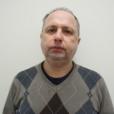

Showing 541 - 560 of 1336 results


Role at ANSTO
Leena works on the development of new ligand systems for 68Ga and 177Lu.
Silicon irradiation
ANSTO is one of the world's leading providers of irradiation services for silicon ingots, which are used by the multimillion dollar electronics industry across Europe and Asia. Each year, ANSTO irradiates more than 50 tonnes of silicon.
Potential good news for a warming world
Collaboration finds that old carbon reservoirs are unlikely to cause a massive greenhouse gas release in a warming world.

Opportunities
Interested in a scholarship or graduate position at ANSTO? Review the opportunities at a glance.
Sydney and Perth schools tackle playground waste and clean up with first prize in ANSTO's hackathon

Role at ANSTO

High-energy heavy ion microprobe
The high-energy heavy-ion microprobe is used for the characterisation or modification of material properties at depths from approximately 1 micrometre to maximum depths of up to 500 micrometres from the material surface.

Role at ANSTO

Pip is a passionate creative who is obsessed with applying design thinking to any and every project she can get her hands on, no matter the topic.
Fine-tuning chemistry for advanced materials
Doping with transition metals produced stability in bismuth oxide.
Fine-tuning chemistry
Doping with transition metals produced stability in bismuth oxide.
Revealing the sources of Sydney’s air pollution
Australian access to overseas synchrotrons
The International Synchrotron Access Program (ISAP) is administered by the Australian Synchrotron and is designed to assist Australian-based synchrotron users to access overseas synchrotron related facilities.
Australia's radioactivity measurement centre officially opened

Dr Bridget Murphy has a background in biological science research and science education at secondary and tertiary levels.
A landmark year and bright future at the Australian Synchrotron

Infrared microspectroscopy
The Infrared Microspectroscopy beamline combines the high brilliance and collimation of the synchrotron beam through a Bruker V80v Fourier Transform Infrared (FTIR) spectrometer and into a Hyperion 3000 IR microscope to reach high signal-to-noise ratios at diffraction limited spatial resolutions between 3-8 μm.